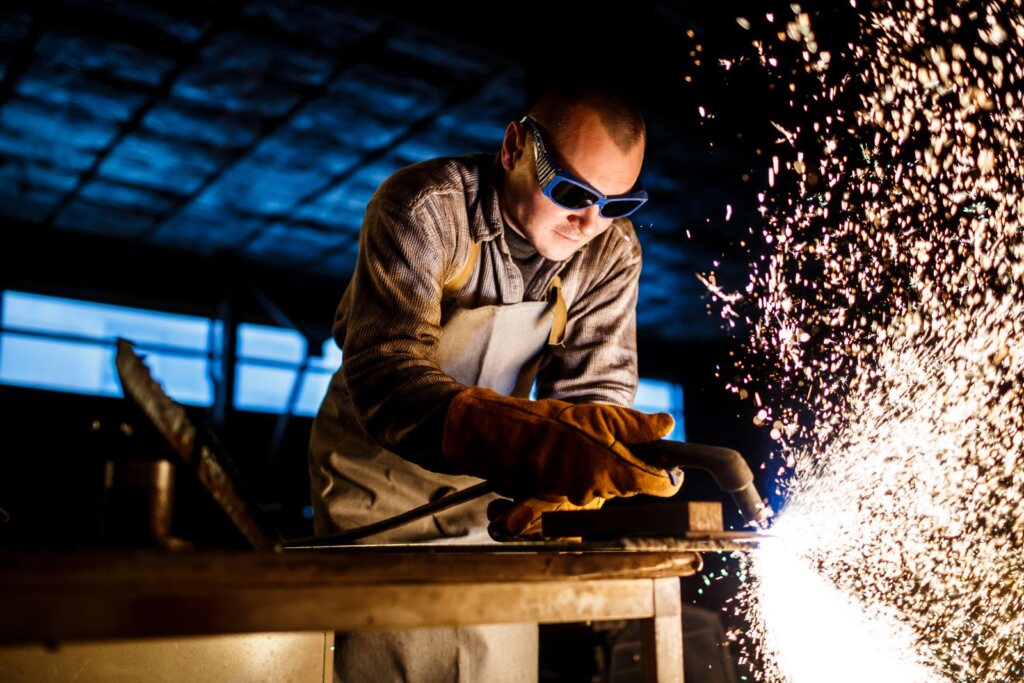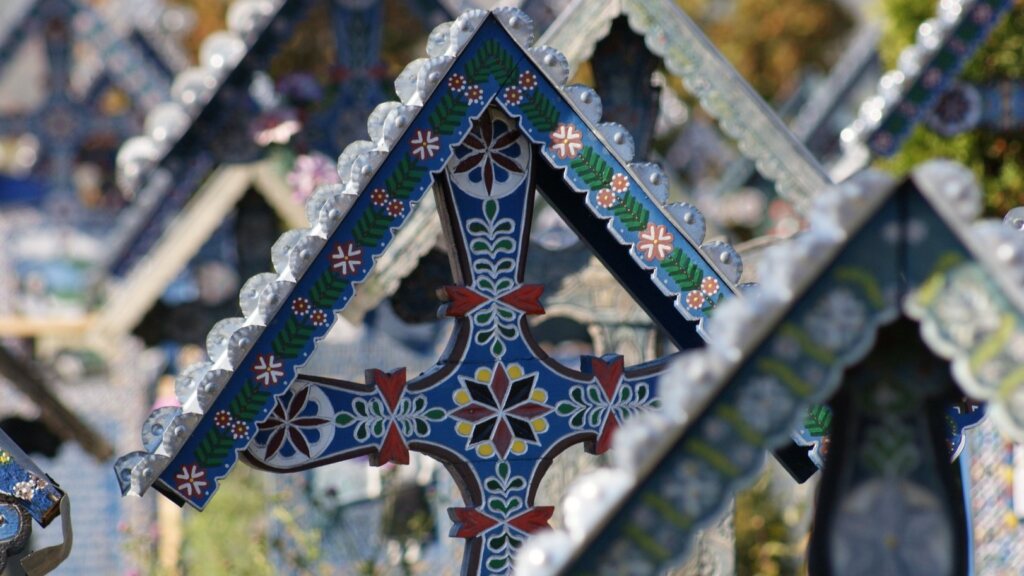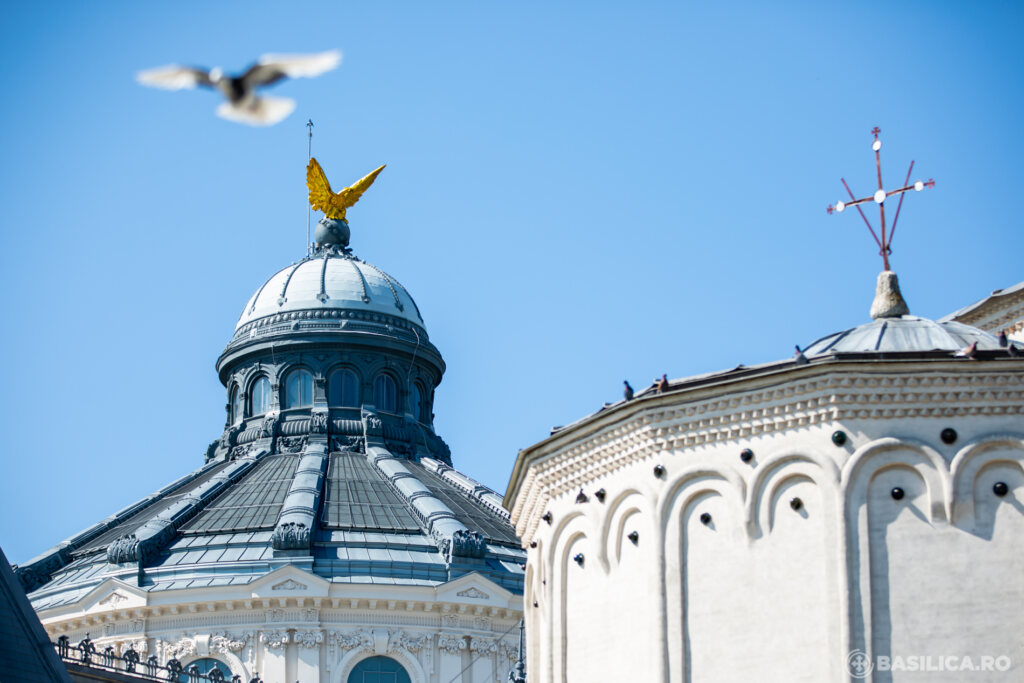“The Cross of Christ shows the humble and merciful love of the Holy Trinity. It is the sign that unites heaven and earth and transforms suffering into the joy of the Resurrection,” His Beatitude Patriarch Daniel said on Thursday on the Feast of the Exaltation of the Holy Cross.
Orthodoxy does not separate the Cross from the Resurrection
“This is why every Sunday we sing: ‘Behold, through the Cross joy has come into all the world‘. Orthodoxy never separates the Cross from the Resurrection, nor the Resurrection from the Cross, because even Christ who rose from the dead did not make the marks of crucifixion disappear from His Body,” His Beatitude said.
“But, although healed, the marks (or stigmata) of His crucifixion nevertheless remained present in His Body risen from the dead, as proof of His eternal love for humanity and as proof that the love of Christ and the Holy Trinity in general is humble and merciful love, for the glory of God and the salvation of humankind.”
“The Cross is the adornment of the Church in the sense that we see it linked to the icon of the Crucifixion linked to the table of the Holy Altar, which is the symbol of the Lord’s Tomb and the symbol of His Resurrection from the tomb and shows at the same time the mystery of suffering, but also the mystery of Christ’s victory,” Patriarch Daniel added.
We venerate the Cross on which Christ was crucified
His Beatitude explained the significance of the feast: “If on the Sunday before the Exaltation of the Holy Cross, on the Sunday after the Exaltation of the Holy Cross, the focus is on the spiritual meaning of the cross, on this day of September 14 the wooden cross on which the Saviour Jesus Christ was crucified is commemorated.”
“The cross of the Saviour Jesus Christ, the historical cross, the wooden cross on which He was crucified together with two thieves on the Hill or Mount Calvary is the cross we honour today, the concrete, tangible, wooden cross.”
The Patriarch of Romania went on to present the history of the feast day.
When was the Holy Cross exalted?
In 326, following the First Ecumenical Council of Nicaea, Emperor Constantine the Great sent his mother, Empress Helena, to seek out the Cross on which the Saviour Jesus Christ was crucified in Jerusalem. Once found in 328, this Holy Cross was given to Patriarch Macarius of Jerusalem.
The patriarch mounted an open-air pulpit and showed the people the Holy Cross, and the faithful responded in prayer: “Lord have mercy, Lord have mercy, Lord have mercy”, repeated many times. The Church of the Holy Sepulchre was built only later and was completed in 335.
“It was consecrated on September 13, 335, and on the following day, September 14, the Saviour’s Cross was again shown to those present there at the consecration and was also lifted in a pulpit, not outside the church, but inside the church. And this was a sealing of the feast of the Exaltation of the Holy Cross in the Church of the Holy Sepulchre or the Church of the Resurrection of the Lord, built at the behest of Emperor Constantine,” Patriarch Daniel explained.
“Saint Helena was no longer alive; she reposed in the Lord in 329, but in 335, the Bishop of Jerusalem, Macarius, was still alive, and he lifted the Holy Cross of Christ on the pulpit in the new Church of the Holy Sepulchre or Resurrection.”
After the Persians attacked the Holy Land and stole the wood of the Holy Cross, Emperor Heraclius waged a long war with them. After winning, he recovered the Holy Cross and returned a fragment to Jerusalem and another to Constantinople.
Thus, on September 14, 629, the Holy Cross was again raised in the Church of the Resurrection (at the Holy Sepulchre of the Lord) as a sign of victory.
“These historical events confirm the veneration of the wood of the Holy Cross on which Christ was crucified,” the Patriarch of Romania stressed.
The Cross, a sanctifier of the air
“The Exaltation of the Holy Cross is a fasting feast because it reminds us of the sufferings of the Lord. At the same time, it is a feast of encouragement because, through the Cross, joy came into all the world; through the power of His humble love, Christ overcame the pride of demons, the sin of the disobedience of our first parents and their lack of restraint, their greed for material goods.”
“And it became the sign of humble and merciful, generous love. As the September Menaion notes, the Cross is also a sanctifier of the air, the sky, the atmosphere,” His Beatitude explained.
“By His birth in a cave, Christ sanctified the nature of the earth. By His baptism in the waters of the Jordan, Christ sanctified the nature of the waters. And by His crucifixion, Christ sanctified the air, the sky, and the atmosphere. And the Menaion of September 14 notes that this feast, the Exaltation of the Holy Cross, also means the sanctification of the nature of wood.”
The Patriarch of Romania participated Thursday at the Divine Liturgy celebrated at the Historical Chapel of St George at the Patriarchal Residence.
Photography courtesy of Basilica.ro Files / Raluca Ene
Follow us on Twitter: @BasilicaNews






